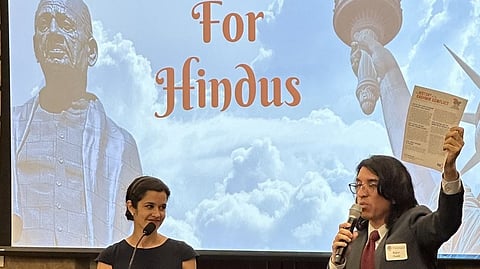BY YASHWANT RAJ
Lawmakers came and held forth. On Mahatma Gandhi. On the Taj Mahal. And Indian-Americans, their riches and their achievements. Anything but Hindu-Americans.
The problem: The lawmakers had been invited to an event hosted by a combination of Hindu-Americans -- Americans for Hindus and the Hindu American Foundation -- in Capitol Hill on Wednesday to support and bless a move to launch a religion-specific Hindu Caucus in the US congress, which, in the words of the hosts, would take care of the Hindus, protect their interests and, most urgently, combat Hinduphobia.
Four of the five Indian-Americans in the US congress, including the three Hindus Raja Krishnamoorthi, Ro Khanna and Pramila Jayapal. did not attend.
The fourth, Ami Bera, is not Hindu, he is Unitarian. Shri Thanedar, the fifth and newest member of the group that calls itself the "Samosa Caucus" attended and promised to shepherd the caucus.
But the other lawmakers? They did not know what they were doing.
"I love the thought of, as I am looking at Mahatma Gandhi and the Statue of Liberty," said Joe Wilson, a Republican member of the House of Representatives, nodding at a large poster in front, and there was the same poster behind him and the speaker's lectern.


